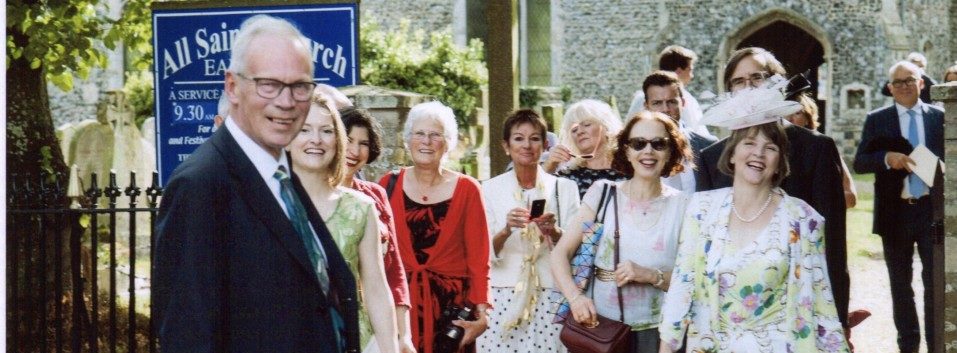This evening was the annual tour round the Common for its owners, which warrants some explanation at the start (and I’ve probably told you before but, keenly as you hang on every word that drops from my lips, you might well not remember) – that is, Yagnub Common is actually privately owned. It comprises 400 acres of land (if I’m right in thinking that a hectare equals two and a half acres, that means 160 hectares according to my marvellous mental arithmetic) which is owned in 300 equal shares – goings, they’re called – between a number of people. Much of the land is rented by the golf club and most of the rest is let to local farmers for grazing.
The Sage owned ten goings, which I’ve inherited. I have often been on the annual tour, but it was always as a representative of another owner who couldn’t be there, in Russell’s lifetime. And we all meet by 6 o’clock and get into a trailer to be pulled by a tractor – this used to be an open thing and we sat on bales of straw, but now it’s a much posher affair and we’re protected from the rain or, as it was this evening, from the blazing sun.
The advantage of the Common being privately owned is that a great deal of land management is done on a voluntary basis by people who know what’s what but also are receptive to good advice from conservationists. It really is excellently done. There was some controversy, some two or three decades ago, when the programme of removing surplus oak trees, gorse and other growth started, but it’s much clearer now that it is being done sensitively and for good reasons.
If the land were left to itself, it would eventually become an oak wood. There are a lot of oak seedlings. There are also birch and other trees and they would flourish for a while, but the more persistent, long-lived oaks would take over in the end. And there’s nothing wrong with that, after all. What could be finer than an oak wood? But that’s not what the conservation people actually want, because heathland is a rarer habitat and encourages different, sometimes rarer, plants and animals, so that’s what planning aims for.
Back in the distant past, there would have been heather on the Common, as the soil is (in the upper areas anyway) quite acid, but it was probably overgrazing many years ago that killed off heather and there are no plans to reintroduce it, though if it turned up it would be encouraged. There are numerous native plants though, such as sheep sorrel and lady’s bedstraw, though one interloper: American blackberries, has an interesting history. Back in the second World War, there were American air bases in the area and it seems that the airmen’s mums used to send over good food for their boys, such as apple pie and blackberry pie and … well,*somehow* the seeds were spread. I suspect that contents of septic tanks were spread on the land rather than a more direct method, but anyway, now I know what American brambles look like, which is rather more ‘cut” than a British blackberry leaf.
Most of us are acutely interested in wildlife of one sort and another and asked a variety of questions, it was all very interesting. And then we were invited back to the golf club for a drink and we chatted for half an hour before I returned to find my dinner all ready for me. I’ve spared LT the whole explanation, on the grounds that he’ll be able to read it here.

The American blackberries are so improbable they have to be true! And I hadn’t heard of lady’s bedstraw, but am always open to learning something new. Though it sounds a bit uncomfortable.
We’ve got lady’s bedstraw on the Ups and Downs, I’ll show you. And I can show you the blackberries on the Common, too.
Sorry about the blackberries. They are very invasive and hard to get rid of here. Now must look up and see what English blackberry plants look like.
They were pretty relaxed about them, surprisingly – the British sort are pretty invasive but the American ones are neither more nor less so. They flower and fruit at the same time, so they are neither better nor worse, so they’re kept in check. It’s useful to have areas of bramble and gorse for small animals and insects to hide from predators, so they don’t try to clear them completely.